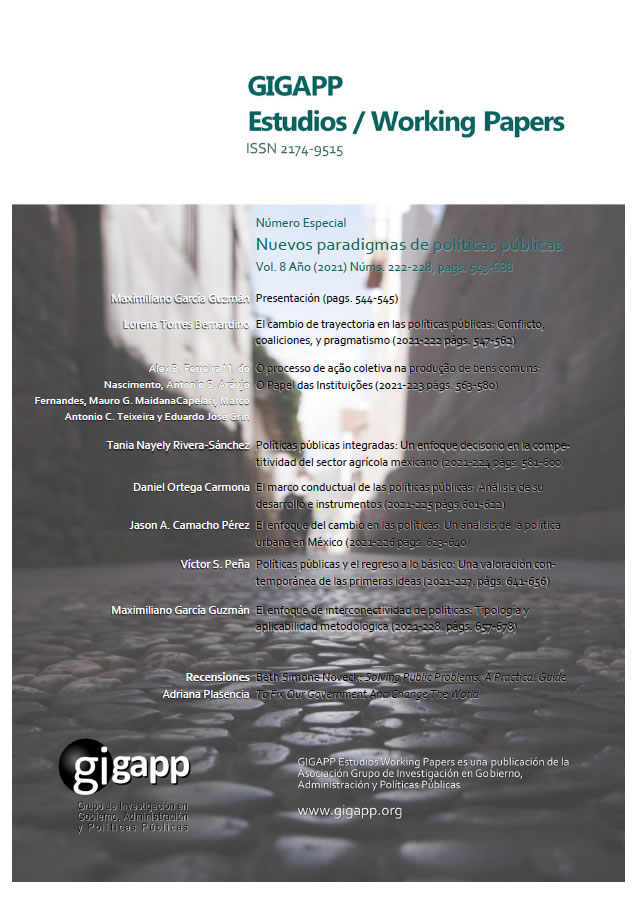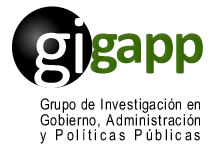Políticas públicas y el regreso a lo básico
Una valoración contemporánea de las primeras ideas
Resumen
Como campo del conocimiento, las políticas públicas son un espacio vivo y, por lo mismo, cambiante: sus ideas se adaptan a las necesidades, evolucionan a partir de la experiencia acumulada y se enriquecen desde su interacción con otros campos del conocimiento humano. En este artículo se presentan algunas notas sobre trabajos de tres expositores fundamentales de las políticas públicas: Harold Lasswell, Charles Lindblom, and Giandomenico Majone. No se replican sus textos más conocidos sino algunos otros que dotan de contexto y matices a sus ideas. Aquí lo novedoso del enfoque es el regreso a lo básico: aproximarse a esos textos de antaño y preguntarnos qué de aquello está ofreciéndonos interesantes piezas para una mejor compresión de las políticas públicas. Con la aspiración a complementar la vertiente de los reenfoques disciplinares, este texto parte del supuesto de que hay ideas poco exploradas que pueden y deben rastrearse para comprenden a cabalidad la disciplina.
Descargas
Citas
Brunner, R. D., & Willard, A. R. (2003). Editors´ Introduction. Policy Science, 71-98.
Lasswell, H. D. (2003). Memorandum. Policy Science, 71-98.
Lindblom, C. E. (1958). Policy Analysis. The American Economic Review, 298-312.
Lindblom, C. E. (1958b). Tinbergen on Policy-Making. The University of Chicago Press, 531-538.
Majone, G. (1974). The role of constrains in policy analysis. Quantity and Quality, 65-76.
Majone, G. (1975). The feasibility of social science. Policy Science, 49-69.
Majone, G. (1977). Technology Assessment and Policy Analysis. Policy Sciences, 173-175.
Majone, G. (1978). Technology Assessment in a Dialectic Key. Public Administration Review, 52-58.
Majone, G. (1980). Policies as theories. Omega, 151-162.
Majone, G (1997). Evidencia, argumentación y persuasión en la formación de políticas. México. Colegio Nacional de Ciencias Políticas y Administración Pública y Fondo de Cultura Económica.
Derechos de autor 2021 Víctor S. Peña, Dr. (Autor/a)

Esta obra está bajo licencia internacional Creative Commons Reconocimiento-NoComercial-CompartirIgual 4.0.
Aquellos autores/as que tengan publicaciones con esta revista, aceptan los términos siguientes:
a. Los autores/as conservarán sus derechos de autor y garantizarán a la revista el derecho de primera publicación de su obra, el cuál estará simultáneamente sujeto a la Licencia de reconocimiento de Creative Commons Attribution-NonCommercial-ShareAlike 4.0 International (CC BY-NC-SA 4.0) que permite a terceros compartir la obra siempre que se indique su autor y su primera publicación esta revista.
Con esta licencia de acceso abierto, los lectores (usuarios) pueden:
- Compartir — copiar y redistribuir el material en cualquier medio o formato
- Adaptar — remezclar, transformar y construir a partir del material
Bajo los siguientes términos:
-
Atribución — usarios deberán dar crédito de manera adecuada, brindar un enlace a la licencia, e indicar si se han realizado cambios. Puede hacerlo en cualquier forma razonable, pero no de forma tal que sugiera que usted o su uso tienen el apoyo de la licenciante.
-
NoComercial — usuarios no puede hacer uso del material con propósitos comerciales.
-
CompartirIgual — Si remezcla, transforma o crea a partir del material, usuarios deben distribuir su contribución bajo la misma licencia del original.
-
Sin restricciones adicionales: los usuarios no pueden aplicar términos legales o medidas tecnológicas que restrinjan legalmente a otros de hacer cualquier cosa que permita la licencia.
b. Los autores/as podrán adoptar otros acuerdos de licencia no exclusiva de distribución de la versión de la obra publicada (p. ej.: depositarla en un archivo telemático institucional o publicarla en un volumen monográfico) siempre que se indique la publicación inicial en esta revista
c. Se permite y recomienda a los autores/as difundir su obra a través de Internet (p. ej.: en archivos telemáticos institucionales o en su página web) antes y durante el proceso de envío, lo cual puede producir intercambios interesantes y aumentar las citas de la obra publicada. (Véase El efecto del acceso abierto).



